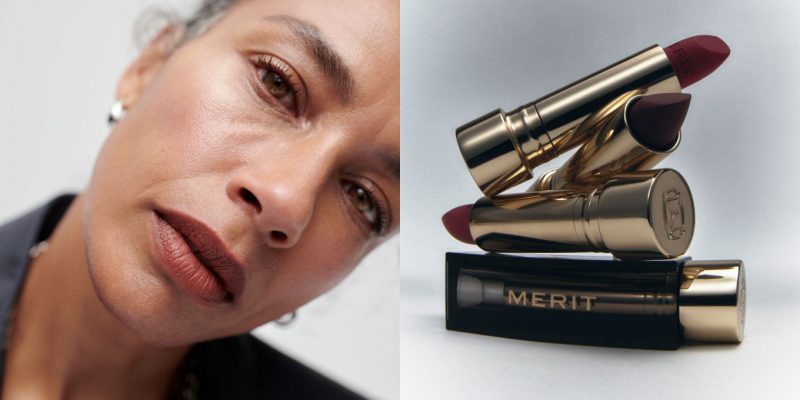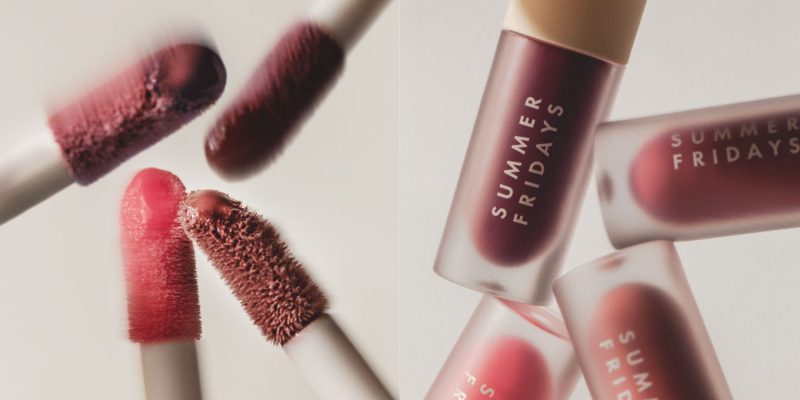Makeup & nails
Natural selection
Count how many times you have been told to slather on the sunscreen before heading outdoors; now, evidence suggests you may be doing yourself – and your skin – more harm than good. Here, a few things to consider before you shop for that next bottle of SPF.
by : Katherine Flemming- Aug 5th, 2010

Wish List
Selecting the right sunscreen is as much to do with your skin type as it is about protection. Some are suited for more sensitive skin, while others tout skin care benefits by using free-radical antioxidants and skin-repairing argan oil in their formulations. Regardless, when shopping, you have two basic choices: Natural-based and chemical-based. The difference between the two? “Natural based sunscreens (which include titanium dioxide and zinc oxide) act as sunblocks,” says Celeste Lutrario, Vice President of Research and Development for Burt’s Bees. “Chemical sunscreens, on the other hand, act as sun filters—meaning they absorb into the skin and filter the rays as they enter the skin.” So, the question remains: Does it really matter if you’re deflecting the sun’s harsh rays, or absorbing them?
Perhaps. Sunscreens with a chemical-based pedigree are currently being scrutinized by organizations like The Environmental Working Group (EWG) and the British Medical Journal primarily for one of their most problematic (but common) ingredients: oxybenzone. Also known as 2-hydroxy-4-methoxybenzophenone or benzophenone-3, it’s one of the main ingredients in non-mineral sunscreens relied upon to provide UVA protection, by absorbing UVB radiation. A 2008 study by the US Centers for Disease Control and Prevention found 97% of Americans are contaminated with oxybenzone.
Oxybenzone: What’s all the fuss?
While the long-term health effects have not yet been linked to oxybenzone, the EWG says it can trigger allergic reactions, can penetrate the skin in large amounts and is a potential hormone disruptor. The short answer? It can mimic or disrupt your body’s natural hormonal production, which may lead to some cancers (including breast cancer). Japan’s Standards for Cosmetics have banned its use in cosmetics while the European Union has demanded products intended for skin protection with more than 0.5% be properly labeled “contains oxybenzone.”
White Out
Mineral sunscreens carry with them a long list of advantages. “They are great for those sensitive skin, with intolerance to certain ingredients and anyone with rosacea as they tend to cause less allergic reactions and sensitivities,” says Toronto-based dermatologist Paul Cohen. They’re also clearly great choices for people concerned about exposure to chemicals. But – and there always is one — beware the cast left by mineral sunscreens, as they “tend to be more white in appearance and can sometimes feel a little more heavy,” says Lutrario.
More about mineral sunscreens and our sunscreen verdict on the next page…
Mega sunscreens: Is SPF 70 the new SPF 30?
The vitamin D debate: Are we depriving ourselves?

For those blessed with olive or darker skin tones, you will be equally as blessed with the formulations appearing closer to gray. But, fear not. We’ve come a long way from the ‘80s beach bum look of a blaring white nose amidst a fire engine red face. Micronized formulas have improved vastly and while they require a few extra minutes to run into the skin, their protection is immediate; unlike their chemical competitors which can take between 15-20 minutes to absorb.
The Verdict
Shop in stores that stock natural cosmetics or devote sections to green beauty products. Scan the back of the bottle, look for “zinc oxide” or “titanium dioxide” as minerals listed closest to the top of the ingredient list. Keep in mind that some chemical-free sunscreens can have elevated price tags, as zinc is expensive to produce.
Shopping List
Check out what topped our list as some of the very best in mineral sunscreens:
• Badger SPF Unscented Natural Sunscreen is loaded with 20 per cent zinc oxide, and they recently removed their essential oil fragrance. $20.00, available at Whole Foods and badgerbalm.com
• Supergoop! SPF 30 Sunscreen Swipes with Zinc for Sensitive Skin: The wipes are gentle, portable, and non-greasy and leave a pretty sheen on skin—particularly legs. $38.00 for 40 wipes, available at sephora.com
• Coola SPF 30 Cucumber Mineral Matte Sunblock smells exactly like a freshly cut cucumber and doesn’t feel heavy or chalky. $36.00 at coolasunscare.com
• Burt’s Bees Chemical-Free Sunscreen: Easy to blend, but make sure you love the scent before purchasing—it can be strong. $20.00, available at health food stores, select drugstores and mass-market retailers.
• Josie Maran Protect Daily Sun Protection Argan Oil Infused SPF 40 smells like an exotic beach in a bottle, with the most featherweight consistency and argan oil to repair skin. $36.00, available at sephora.com
Test the latest celebrity hair and makeup trends with our Virtual Tour Makeover Tool!
Read more:
Bootylicious: The latest cellulite products and treatments
Body treats: Pamper your body this season
I am woman: Thierry Mugler’s new fragrance
Newsletter
Join our mailing list for the latest and biggest in fashion trends, beauty, culture and celebrity.
Read Next

Fashion
Reitmans and The Birds Papaya Just Dropped The Dreamiest Spring Collection
Welcome to Sarah's Playhouse.
by : Melissa Fejtek- Apr 22nd, 2024

Decor
11 Zero Waste Decor Picks To Elevate Your Living Space
These brands are transforming waste materials into stylish products for your home.
by : Maca Atencio- Apr 22nd, 2024

Beauty
Tested and Approved: Your New Hydrating Skincare BFF
This new product has all of your skin’s thirst-quenching needs covered.
by : ELLE Canada- Apr 17th, 2024




